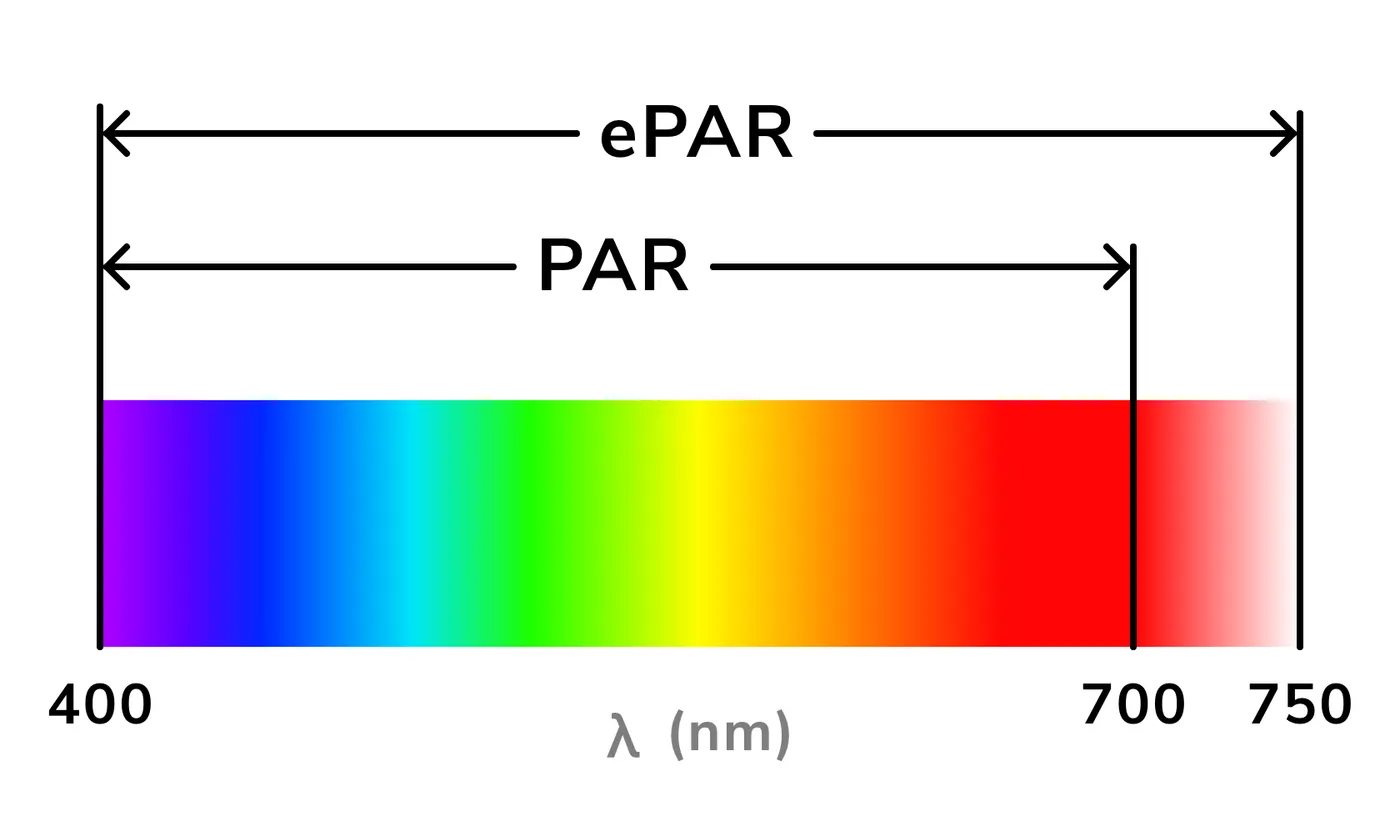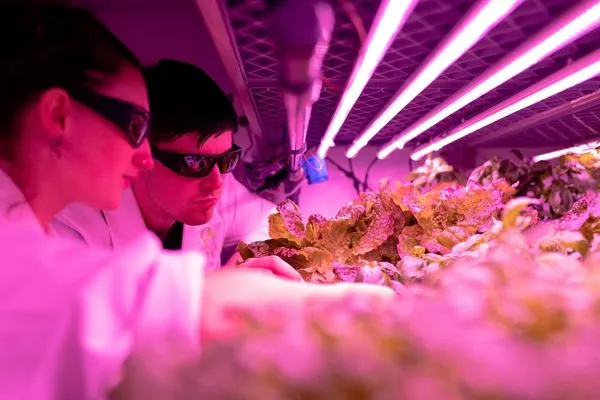
Auto-Translate
Measurement Values Explained
Learn about PAR, PPFD, DLI, Illuminance, and CCT

Photone allows you to measure different properties of light. Most measurements (all except from CCT) are light intensity measurements. This means they indicate how much light reaches a surface at any given time.
PAR
Photosynthetically Active Radiation (PAR) describes the wavelengths (i.e. colors) of light that plants use for photosynthesis. PAR comprises photons with wavelengths between 400 and 700 nanometers (nm). PAR is measured as PPFD.
ePAR
Extended Photosynthetically Active Radiation (ePAR) expands the PAR range by including far-red photons (i.e. light) up to 750 nm. When the ePAR switch is turned on, the PPFD and DLI readings on the main screen automatically change to their extended version (ePPFD and eDLI).

Measurement Values Available in Photone
The following types of measurements are available in the app. You can swap between them by swiping left or right on the main screen.
PPFD (PAR Meter)
Photosynthetic Photon Flux Density (PPFD) describes how much photosynthetically usable light your plant receives at any given moment. PPFD is typically measured in micromoles of photons (i.e. light particles) per square meter per second (μmol/m²/s). This is the most relevant measurement for plant lighting and also what common PAR meters or quantum meters usually display. Learn more on the Photone blog:

ePPFD
Extended Photosynthetic Photon Flux Density (ePPFD) is similar to PPFD but accounts for the ePAR range instead of the PAR range. The unit remains the same (μmol/m²/s), but measurement values will be slightly higher if you’ve selected a light source with a high proportion of far-red light (e.g. Sun or LED FS + Red).
DLI
The Daily Light Integral (DLI) measures the total amount of photosynthetically usable light a plant receives over an entire day, assuming the light intensity remains constant for the configured photoperiod. Set the photoperiod (i.e. amount of hours your light is on) to get the correct DLI. The DLI is typically measured in moles of photons per square meter per day (mol/m²/d).
eDLI
The extended daily light integral (eDLI) is similar to the DLI but accounts for the ePAR range instead of the PAR range. The unit remains the same (mol/m²/d), but measurement values will be slightly higher if you’ve selected a light source with a high proportion of far-red light (e.g. Sun or LED FS + Red).
Illuminance
Illuminance is measured in lux or foot-candle (fc) and describes how much light, as perceived by humans, reaches a surface. The total light output of a lamp (i.e. its radiant flux) is measured in lumen (lm). Lux (lm/m²) is how many lumen reach a square meter whilst foot-candle (lm/ft²) describes lumen per square foot.
Illuminance should not be used when measuring light for plants. Learn why on the Photone blog:

CCT
Correlated color temperature (CCT) refers to the color appearance of a light source and is measured in Kelvin (K). In other words, the CCT describes how "warm" or "cool" a light appears. For example, a lower CCT like 2700K describes a warm, yellowish light. A higher CCT such as 6500K describes a cool, bluish light.
The CCT is an important factor in plant lighting as it can influence a plant’s properties during various growth stages such as flowering and fruit production, leaf size and thickness, and the overall plant shape and structure.
The sun's CCT varies throughout the day, ranging from warm reddish-orange light (2000-3000K) at sunrise and sunset, to cooler white light (5500-6500K) at midday. This natural cycle occurs due to changes in the sun's position and the amount of atmospheric gasses its light travels through.
Other Grow Lighting Metrics
You might have heard of other plant lighting-related metrics such as PPE, PPF, YPF, YPFD, or the McCree curve. Head over to our blog and have a look at the full grow light metrics glossary:




